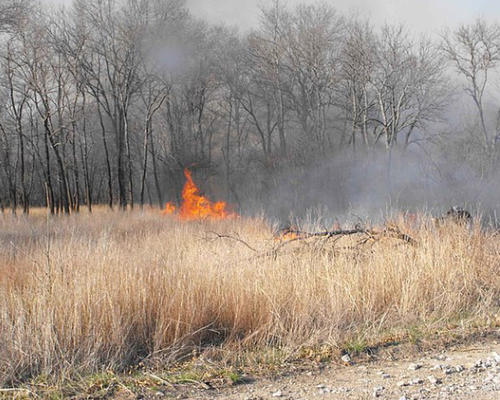Dust particles from agricultural fires
Agricultural fire
Image Credit: U.S. Fish and Wildlife Service Public Domain
Fires not only introduce soot and other combustion products into the atmosphere, but also mineral dust particles from the ground. Just like desert dust, they also contribute to the total atmospheric dust load, but especially in areas heavily affected by fires. It is important to include this particular source of dust in climate models to better understand effects on the radiation budget and cloud formation.
However, the exact mechanism by which the dust particles enter the atmosphere during these fires has not been adequately studied. This, however, is essential for understanding the effects on the Earth system.
The data
The data set contains the most important wind field properties that can be used for subsequent numerical simulations (see here). In addition, the dependence of dust emission fluxes of two dust emission schemes used ("saltation" and "convective-turbulent dust emission") on changing ground surface properties such as soil type, soil moisture, and different roughness lengths is presented.
The data are sorted by their use in creating the figures in the associated journal article (see here). All data are available as netcdf files.
Publication of the data set: Wagner R (2021) https://doi.org/10.5281/zenodo.5205676
Research Results
In this study, the behavior of two common dust emission processes, saltation, (SALT) and convective-turbulent dust emission (CTDE), was investigated using models in the fire environment. It was found that, especially under low wind conditions, the direct input of dust particles by fire into the atmosphere (CTDE) is an important process. The second process, involving larger sand grains on the ground (SALT), becomes more important under strong wind conditions. However, the strength of the relative contribution of the two dust emission processes can vary significantly depending on wind speed, fire characteristics, and ground surface conditions.
Publication of journal article: Wagner R, Schepanski, K et al (2021) https://doi.org/10.1029/2020JD034355
Texts modified from Wagner R, Schepanski K et al (2021) https://doi.org/10.1029/2020JD034355 and Wagner R (2021) https://doi.org/10.5281/zenodo.5205676
